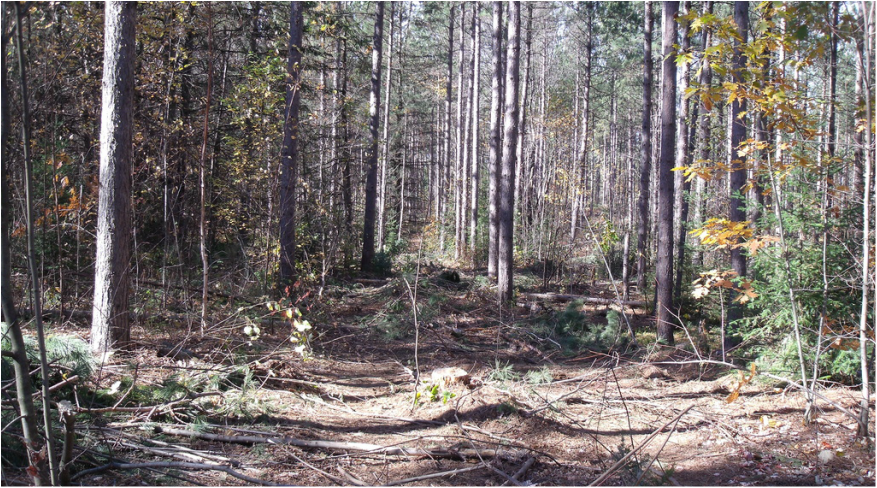Conifer Plantation Management
Conifer plantations were becoming established early in the 1900's, with specific increases during the depression and after the war. Farmland on the sandy sites were unpredictable during drought, were often abandoned and later turned over to County property. Planting efforts begun shortly after to reclaim these abandoned fields. The Ministry of Natural Resources often managed these sites up until the 1980's. Within the past couple of decades the results of this often exceptional management are paying dividends. Good sites can produce substantial volumes while successfully allowing regeneration to flourish.
The forest above is well on its way from pine plantation to becoming a naturalized forest. On the drier sites additional planting of white pine seedlings maybe required if natural regeneration not present. It is common practice today to plant at least two species per site. Adding white pine to the mix will allow future development as white pine can become established under the right conditions. Preparing seed beds during bumper cone crops is the easiest method to establish regeneration. Broadcast planting or acorns during the fall will allow red oak to become established in the understory.Once the second thinning is completed a decision will be made weather to factor in transplanting seedlings.


